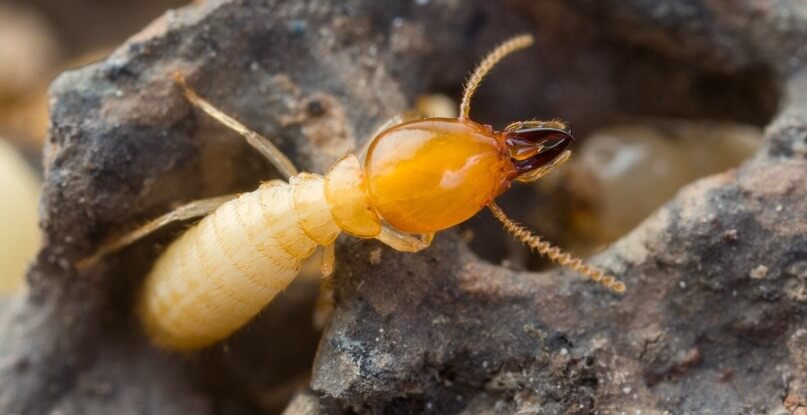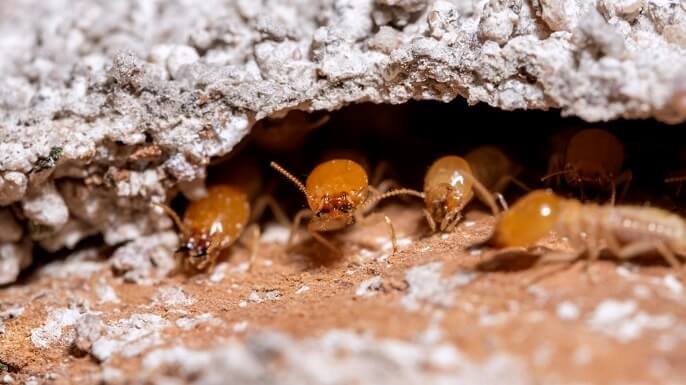Boracare vs Timbor Insecticide

As pest control and wood preservation concerns continue to gain prominence, choosing the most effective products is vital. Two leading insecticides, Bora-Care and Tim-bor, are frequently in contention for the top spot. This article compares these two products, scrutinizing their composition, effectiveness, versatility, and application.
Boracare vs Timbor Table
This comparison table will help you to understand the difference between Bora-Care and Tim-bor at a glance.
Boracare | Timbor |
Boron sodium oxide (B8Na2O13), tetrahydrate (12280-03-4) 40% | Disodium Octaborate Tetrahydrate 98% |
The Long Term Solution to Wood Destroying Organisms | Tim-bor's effectiveness increases with the wood's moisture content. |
Spray or brush or roll on the surface of the wood | Won't stain or discolor wood surfaces. |
Kills existing infestation in wood, Patented formula penetrates deep into the wood | Interior and Exterior as an Insecticide, Fungicide, or Wood Preservative - Use on Untreated Wood |
One gallon of Bora-Care can treat approximately 100 lineal feet of 2x4 stud wall, or 800 square feet of a 2x4 stud wall. | 1.5 pounds of Tim-bor can treat up to 200 sq. ft of untreated wood. |
It's backed by a 30-Year Limited Warranty, a unique offer in the industry. | Tim-bor Professional is a water-soluble borate powder that can be applied in various forms, including dust, spray, foam, and mist. |
It is proven effective against drywood termites, subterranean termites, Formosan termites, carpenter ants, powderpost beetles, and old house borers. | It's effective in controlling carpenter ants, drywood termites, wood decay fungi, and wood-boring beetles. |
Active Ingredient
Both Bora-Care and Tim-bor boast borate-based formulas. Bora-Care contains 40% Boron Sodium Oxide (B8Na2O13) as its active ingredient, while Tim-bor Professional features a higher concentration of the same substance at 98%.
The borate salts in both products exploit a unique feature in insect biology: if ingested, they prevent the insects from extracting nutrition from their food, causing starvation and death.
Target Pests
Bora-Care and Tim-bor share common targets designed to control a wide range of wood-destroying pests. This includes but is not limited to termites, carpenter ants, and beetles. Their efficacy in pest control makes them a popular choice for preserving and protecting wood-based materials.
Differing Application Areas
While both products can be applied to all cellulosic materials such as wood, plywood, and paper, there is a key distinction between their specific uses.

Tim-bor is generally recommended for safeguarding new wood from prospective infestations. On the other hand, Bora-Care offers a more comprehensive application, covering both prevention and active treatment of existing infestations.
Penetration Capabilities
Integral to their effectiveness is their ability to penetrate the wood. Both Bora-Care and Tim-bor are designed to infiltrate deeply into the wood and provide extended protection, making them invaluable tools in long-term pest management strategies.
Mode of Action
Their action mechanism revolves around borate salt, the active ingredient. This compound affects the digestive system of insects, making them unable to extract nutrition from their food. In effect, the pests are subjected to a slow death by starvation.
Resistance & Odorlessness
A noteworthy aspect of both Bora-Care and Tim-bor is their virtually odorless nature, making their application more user-friendly. Furthermore, insects are unable to develop resistance to these products, thanks to their unique mode of action. This ensures the longevity and consistency of their effectiveness.

Mold Treatment
When it comes to mold treatment, Bora-Care takes the lead. Bora-Care offers an option for mold treatment, referred to as Bora-Care with Mold-Care. Tim-bor, however, does not extend its functionality to treat or prevent mold, focusing strictly on pest control.
Coverage Area
The coverage provided by a gallon of diluted Bora-Care is significantly larger than that of Tim-bor. A single gallon of Bora-Care can treat approximately 600 linear feet of 2×4 stud wall, while the equivalent amount of Tim-bor covers around 200 square feet of untreated wood.
Primary Uses
When considering primary use in new constructions, Bora-Care is labeled as an approved termite treatment. Conversely, Tim-bor is not recognized as a primary new construction termite treatment, although it is still a formidable choice for preventative care in new wood materials.
Environmental Concerns
Both Bora-Care and Tim-bor are environmentally conscious products. Borate salts, their active ingredient, are derived from a natural mineral. However, Tim-bor Professional explicitly promotes itself as being manufactured with a concern for the environment.
Moreover, it doesn’t discolor or stain wood surfaces and won’t corrode screws, nails, and other construction components.
Are Boracare and Timbor safe to use around pets and children?
According to the manufacturer’s instructions, Boracare and Timbor are considered safe for pets and children. However, protective gear such as gloves and respirators are recommended to minimize inhalation or skin exposure to pesticides and herbicides.
Can Timbor be used on painted or stained wood?
Timbor can be used on unpainted and unstained wood surfaces to provide surface-level protection against bugs and decay fungi. However, it is not recommended for use on painted or stained wood surfaces.
How often should Boracare be reapplied for maximum effectiveness?
Boracare should be reapplied for maximum effectiveness every 10-20 years, depending on the severity of the infestation. Regular inspections are recommended to ensure the product’s continued protection against wood pests.
Can Boracare and Timbor be used on outdoor wooden structures?
Yes, Boracare and Timbor can be used on outdoor wooden structures. Both products are effective wood preservatives that can protect against termites and decay fungi, but their unique properties and application methods should be considered for optimal results.
Our Observation
Both Bora-Care and Tim-bor are excellent borate-based treatments designed to control wood-destroying insects and decay fungi. However, considering their respective properties and applications, Bora-Care appears to be more comprehensive in its coverage and durability. It is suitable for use on a broader range of materials and remains within the wood for its lifetime, providing ongoing residual protection.
Its unique ability to deprive insects of nutrition, thereby leading to their starvation, ensures that insects cannot develop resistance. Moreover, the Bora-Care 30-Year Limited Warranty gives it an edge in terms of long-term assurance for your investment.
While Tim-bor Professional is also highly effective and economical, it is particularly recommended when eradicating fungus from wood and in high moisture conditions. Overall, Bora-Care appears to be the stronger choice for a comprehensive, long-term solution to wood pest problems.
Related Article

James E. Butkovich, Pest control maven with a knack for eco-friendly & Chemical solutions. Blogger with a mission to make homes pest-free, one post at a time.

